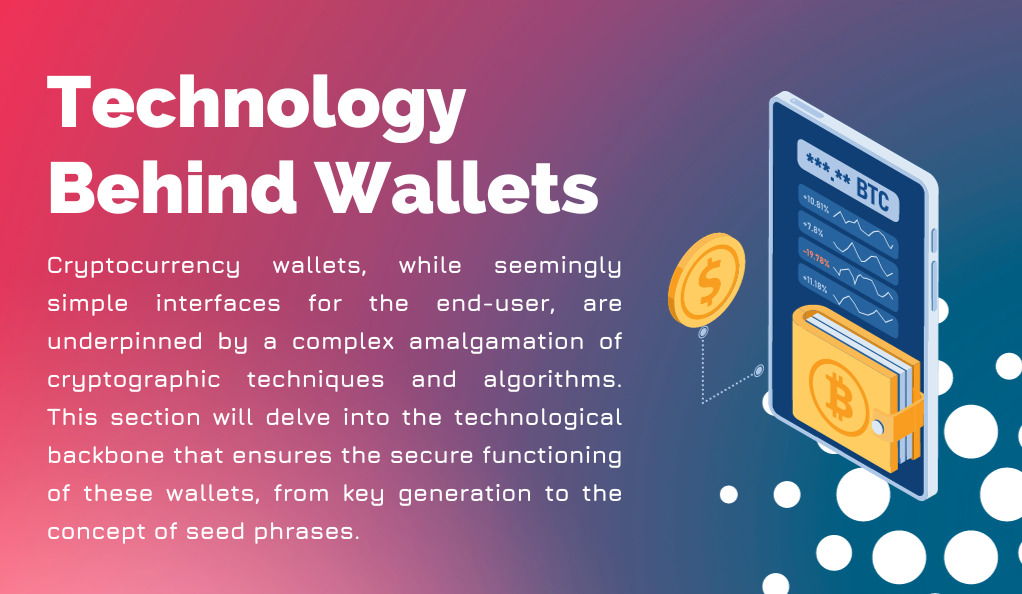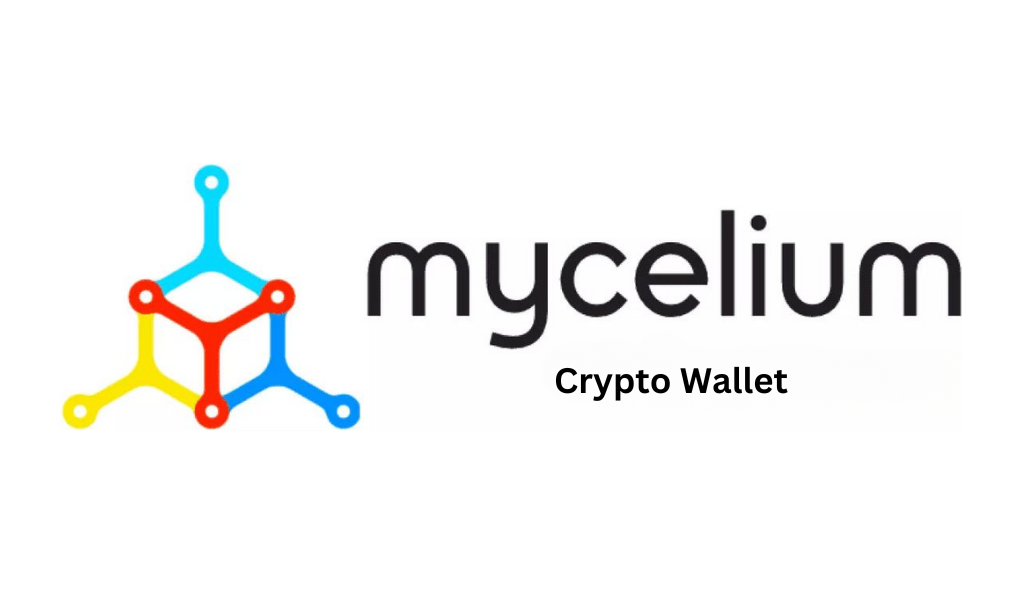In the ever-evolving world of digital finance, cryptocurrency wallets have emerged as essential tools for managing and safeguarding digital assets. As the bridge between users and their cryptocurrencies, these wallets play a pivotal role in ensuring that transactions are not only seamless but also secure. But what exactly is a cryptocurrency wallet? And why is security such a paramount concern in this realm? Let’s delve into the anatomy of a secure cryptocurrency wallet to understand its significance and the technology that underpins it.
What is a Cryptocurrency Wallet?
At its core, a cryptocurrency wallet is a digital tool that allows users to store, send, and receive cryptocurrencies. Think of it as a digital purse or wallet, but instead of physical cash, it holds digital tokens. Each wallet is equipped with two cryptographic keys: a public key, which is shared with others to receive funds, and a private key, which is kept secret and is used to sign transactions and access the wallet’s contents.
| Key Type | Purpose | Visibility |
|---|---|---|
| Public Key | To receive funds | Visible to others |
| Private Key | To sign transactions and access funds | Kept secret |
The Importance of Security
The decentralized nature of cryptocurrencies means that there’s no central authority or bank overseeing or processing transactions. While this offers a high degree of freedom and privacy, it also means that the responsibility of security falls squarely on the user’s shoulders. A compromised wallet can lead to irreversible loss of funds. Given the monetary value and the potential for misuse, ensuring the utmost security of these wallets becomes paramount.
In the past, there have been instances where cryptocurrency exchanges and wallet providers have been hacked, leading to significant losses for users. Such events underscore the need for individuals to understand the anatomy of their wallets and the security measures in place.
The Basics of a Cryptocurrency Wallet

Navigating the world of cryptocurrencies can be daunting, especially with the myriad of technical terms and concepts. At the heart of this ecosystem lies the cryptocurrency wallet, a fundamental tool that every crypto enthusiast should understand. In this section, we’ll break down the basic components and functions of a cryptocurrency wallet.
Defining a Cryptocurrency Wallet
A cryptocurrency wallet, in its simplest form, is a digital interface that facilitates the storage and management of cryptographic assets. However, contrary to popular belief, the wallet doesn’t actually “store” the cryptocurrency. Instead, it holds cryptographic keys that provide access to the blockchain, where the actual funds are recorded.
Public and Private Keys: The Backbone of a Wallet
Every cryptocurrency wallet is associated with a pair of cryptographic keys: a public key and a private key. These keys are instrumental in the functioning of the wallet and ensure the security and authenticity of transactions.
| Key | Function | Usage |
|---|---|---|
| Public Key | A cryptographic address that others use to send you cryptocurrency. | Comparable to an email address; you can share it with others. |
| Private Key | A secret key that proves ownership of the funds and allows you to send cryptocurrency. | Comparable to a password; it should never be shared and must be kept secure. |
How Transactions Work
When you want to receive cryptocurrency, someone sends it to your wallet’s public address. Your wallet then uses its private key to verify and accept the transaction, updating your balance. For example, if Alice decides to send 1 Bitcoin to Bob, she directs it to Bob’s public address. Bob’s wallet checks the transaction using its private key and updates his balance once verified.
Deterministic Nature of Keys
An interesting feature of these keys is their deterministic nature. The public key is derived from the private key through a cryptographic algorithm. This means that if you have the private key, you can always generate the associated public key. However, the reverse (deriving the private key from the public key) is computationally infeasible, ensuring the security of the wallet.
Historical Context
The realm of cryptocurrencies isn’t as new as some might think. Its roots trace back to the conceptualization and introduction of Bitcoin, the pioneer that paved the way for the vast digital financial ecosystem we witness today. In this section, we’ll journey back in time to understand the historical backdrop that led to the creation of cryptocurrency wallets.
The Genesis: Introduction of Bitcoin
In 2008, an individual or group using the pseudonym Satoshi Nakamoto introduced Bitcoin to the world through a whitepaper titled “Bitcoin: A Peer-to-Peer Electronic Cash System.” This introduction marked more than just the birth of a new currency; it heralded the dawn of a revolutionary decentralized payment system. Instead of relying on central authorities or intermediaries, this system proposed verifying transactions using cryptographic proof, ensuring trust through technology.
The Need for a Secure Storage Solution
With the advent of Bitcoin, there arose a need for a mechanism to store, send, and receive this new form of digital cash. Traditional banking methods were not equipped to handle this decentralized currency. This gap led to the development of the first cryptocurrency wallets. These wallets were rudimentary, primarily designed to facilitate Bitcoin transactions.
Evolution with the Blockchain
As the concept of the blockchain gained traction, it became evident that its applications extended beyond just supporting Bitcoin. The blockchain’s ability to provide a transparent, immutable, and decentralized record of transactions made it a promising tool for various applications.
With the diversification of blockchain applications and the introduction of new cryptocurrencies, wallets too had to evolve. They transitioned from being simple Bitcoin storage solutions to multifaceted tools capable of supporting multiple cryptocurrencies and even interacting with smart contracts.
The Principle Outlined by Satoshi Nakamoto
Nakamoto’s principle was groundbreaking. It proposed a system where trust in transactions was established not by intermediaries but by network consensus and cryptographic proofs. This principle laid the foundation for the cryptocurrency wallets we use today. At its core, the principle emphasized:
- Decentralization: Eliminating the need for central authorities.
- Transparency: All transactions are recorded on a public ledger.
- Security: Cryptographic methods ensure the authenticity and security of transactions.
- Anonymity: While transactions are transparent, the identities of the parties involved remain pseudonymous.
Technology Behind Wallets.

Cryptocurrency wallets, while seemingly simple interfaces for the end-user, are underpinned by a complex amalgamation of cryptographic techniques and algorithms. This section will delve into the technological backbone that ensures the secure functioning of these wallets, from key generation to the concept of seed phrases.
How Key Generation Works in Cryptocurrency
In the realm of cryptocurrency security, key generation stands as a pivotal process. The system first produces a random or theoretical number based on the specific cryptocurrency’s algorithmic needs. It then converts this number into a private key, following the cryptocurrency’s cryptographic standards. Using this private key, the system then generates a corresponding public key through the appropriate cryptographic algorithm. The private key empowers users to access and send cryptocurrency, while the public key facilitates its reception. This dual-key approach ensures a balance between security and transactional functionality.
Understanding the Role of Seed Phrases
Seed phrases, often a sequence of 12 to 24 random words, have carved out a crucial role in cryptocurrency security. Unlike complex cryptographic keys, these phrases present a user-friendly format that users can easily remember or jot down. But their simplicity doesn’t diminish their importance. If users lose their wallet access or face a security breach, they can use their seed phrase to regain access to their funds. Whether the wallet exists online, offline, or on a hardware device, the consistent and secure random generation algorithms behind seed phrases ensure they remain a reliable safety net.
The Role of the Blockchain
While the wallet holds the keys, the actual funds are recorded on the blockchain. When a transaction occurs:
- The private key signs off on the transaction.
- The transaction is broadcasted to the network.
- Miners or validators confirm the transaction.
- Once validated, the transaction is added to the blockchain.
This decentralized ledger ensures that every transaction is transparent, immutable, and secure.
Addressing Potential Key Collisions
A concern in the realm of cryptographic keys is the potential for collisions, where two wallets might inadvertently generate the same private key. However:
- The probability of such an occurrence is astronomically low.
- The vast number of possible key combinations makes duplicating or hacking a specific key virtually inconceivable.
Types of Cryptocurrency Wallets
The cryptocurrency landscape is vast and diverse, and so are the tools designed to interact with it. Cryptocurrency wallets come in various forms, each tailored to specific needs and security levels. This section will provide a comprehensive overview of the different types of cryptocurrency wallets available, helping users make informed decisions about where to store their digital assets.
Simple Cryptocurrency Wallet
The most basic form of a cryptocurrency wallet, a simple wallet, is designed for straightforward transactions. It holds a single pair of public and private keys and is ideal for users who only transact with one type of cryptocurrency.
Features:
- Single currency support
- Basic security features
- User-friendly interface
eID Wallet: The European Blockchain Services Infrastructure (EBSI) Example
The eID wallet is a unique type that integrates with the European Blockchain Services Infrastructure (EBSI). It’s designed to provide European citizens with secure access to public services using blockchain technology.
Features:
- Integration with European public services
- Enhanced security protocols
- Multi-currency support
Multisignature Wallets
For those seeking an added layer of security, multisignature wallets are an excellent choice. These wallets require multiple private keys to authorize a transaction, similar to a multi-signatory bank account.
Features:
- Multiple keyholders
- Enhanced security against unauthorized transactions
- Ideal for organizational or joint holdings
Hierarchical Deterministic Wallets (HD Wallets)
HD wallets are advanced tools that generate a hierarchical tree-like structure of private and public keys from a single, master seed phrase. This allows users to create an almost infinite number of keys from a single source.
Features:
- Infinite key generation from a single seed
- Enhanced privacy as each transaction can use a new address
- Efficient backup and recovery using the master seed
Other Notable Wallet Types
- Hot Wallets: These are connected to the internet and are suitable for daily transactions. Examples include desktop wallets, mobile wallets, and online wallets.
- Cold Wallets: These are offline storage solutions, ideal for long-term holdings. Examples include hardware wallets and paper wallets.
- Custodial Wallets: Managed by third-party entities, these wallets store the user’s private keys. Examples include exchange wallets.
- Non-Custodial Wallets: The user retains control of the private keys, ensuring full ownership of their assets.
Smart Contracts and Wallets

In the dynamic world of blockchain technology, smart contracts have emerged as a revolutionary tool, automating and securing complex transactions on the blockchain. But how do cryptocurrency wallets fit into this picture? In this section, we’ll explore the symbiotic relationship between smart contracts and wallets, shedding light on how they interact and the pivotal role wallets play in executing these digital contracts.
Understanding Smart Contracts
Before we dive into their interaction with wallets, let’s first understand what smart contracts are. A smart contract functions as a self-executing contract. Developers write the terms of agreement or conditions directly into lines of code. These contracts run on the blockchain, ensuring they execute exactly as programmed without any intermediaries, making them transparent, immutable, and secure.
Digitally Signing Smart Contracts
When you initiate a smart contract from your wallet, you start a series of vital steps. First, you trigger the smart contract. Your wallet then uses your private key to digitally sign the contract, ensuring its authenticity. After signing, your wallet broadcasts the smart contract to the blockchain network for execution. Once the contract meets its predefined conditions, it self-executes, and the blockchain captures the result. This sequence highlights the pivotal role wallets play in the smooth and secure execution of smart contracts.
The Role of Cryptocurrency Wallets in Executing Smart Contracts
- Authentication: Wallets ensure that the entity initiating the smart contract is genuine by using private keys for authentication.
- Gas Fees: Smart contracts require computational power for execution. Wallets manage the payment of these ‘gas fees’ using the cryptocurrency they hold.
- Interaction: Wallets allow users to interact with smart contracts, be it deploying, triggering, or querying them.
- Event Monitoring: Advanced wallets can monitor specific events or triggers on smart contracts and notify the user accordingly.
Navigating Security Implications in Smart Contracts
Smart contracts, with their automated operations, demand rigorous security measures. Wallets stand at the forefront of this security challenge. They hold and protect the private key, ensuring that only the genuine owner initiates or interacts with smart contracts. Advanced wallets even let users review the smart contract’s code before they sign it, helping them spot and sidestep potential vulnerabilities. Users also have the power to customize permissions in their wallets, deciding which smart contracts they want to execute and setting caps on gas fees. These proactive steps highlight the critical role of security in the world of smart contracts.
Concerns and Vulnerabilities
The digital realm of cryptocurrencies, while offering unparalleled advantages, is not without its challenges. As the popularity and adoption of cryptocurrency wallets grow, so do the concerns and potential vulnerabilities associated with them. This section aims to shed light on these issues, ensuring users are well-informed and can take necessary precautions.
Trust Issues with Wallet Providers
- Centralization Concerns: Some wallet providers, especially custodial ones, operate on centralized servers. This centralization can become a single point of failure, making them susceptible to hacks.
- Transparency: Not all wallet providers are transparent about their operational practices, leading to trust issues. Open-source wallets, on the other hand, allow for community scrutiny, ensuring transparency.
- Hidden Fees: Some wallets might have hidden fees or unfavorable exchange rates, leading to users incurring unexpected costs.
Potential Vulnerabilities and Threats
In the digital world of cryptocurrencies, users face various threats that can jeopardize their assets. Cybercriminals often design fake wallet applications or websites, aiming to trick users into revealing their private keys or seed phrases through phishing attacks. Malicious software, known as keyloggers, actively records users’ keystrokes, capturing private keys during wallet access. In man-in-the-middle attacks, attackers intercept and potentially alter the communication between users and their wallet providers. Physical threats also loom large, especially for hardware wallets. Thieves can steal these devices, they can suffer damage, and even paper wallets, though offline, can get lost or destroyed. Recognizing these threats and taking active preventive measures becomes essential to protect one’s digital assets.
Importance of Choosing a Secure Wallet
- Asset Protection: A secure wallet ensures that users’ digital assets are safe from unauthorized access and theft.
- Privacy Maintenance: With increasing concerns about data privacy, a secure wallet ensures transaction details and user identities remain private.
- Peace of Mind: Knowing that one’s assets are safe allows for a stress-free experience in the crypto world.
Best Practices for Wallet Security
To ensure the safety of your digital assets, you should regularly back up your wallet data, safeguarding against potential device failures. Implementing multi-factor authentication or using multi-signature features adds an extra layer of security. Always keep your wallet software and your device’s operating system updated to protect against vulnerabilities. For those holding significant amounts, consider transitioning to cold storage options like hardware or paper wallets. By actively adopting these best practices, you can fortify the security of your cryptocurrency holdings.
Conclusion
The world of digital finance, characterized by the rapid advancements of blockchain technology and cryptocurrency wallets, is a testament to the transformative power of innovation. From their humble beginnings as rudimentary tools for Bitcoin to their current multifunctional capabilities, wallets have evolved to meet the growing demands of an expanding user base. However, with increased adoption comes heightened challenges, from security threats to regulatory intricacies. It’s imperative for users to stay informed and vigilant, ensuring their digital assets remain secure in this ever-changing landscape.
Looking ahead, the future of cryptocurrency wallets promises even greater integration, from seamless connections with the Internet of Things (IoT) to the development of quantum-resistant cryptographic measures. As these tools continue to evolve, they’ll not only safeguard our digital assets but also redefine how we perceive and interact with the financial world. Embracing knowledge and best practices will be the key to navigating this exciting frontier with confidence and security.
Bitcoinnewsmagazine is committed to providing impartial and reliable insights into cryptocurrency, finance, trading, and stocks. It's important to note that we do not provide financial advice, and we strongly encourage users to conduct their own research and due diligence.
Read More


